Years ago I performed an experiment to find out whether I liked dry curing or wet curing pork tenderloin before cooking it sous vide. The conclusion was that for meat I preferred to just season with salt right before cooking sous vide. And that is what I have done ever since. But for fish I sometimes briefly cure before cooking sous vide, and sometimes I don’t. So it was time to do another experiment to decide whether briefly curing fish before cooking it is worth the effort. The experiment started with the piece of halibut fillet on the photo above. Note that this experiment is also useful if you are going to cook the fish without sous vide, as long as you keep it moist on the inside. If you are going to overcook the fish, curing is not going to help.
I divided it into two pieces of equal size, 120 grams (4 oz).
The very simple curing mix I use for fish (as recommended by Modernist Cuisine) is 1,4% salt, so in this case 1.7 grams…
…and 0,6% sugar, so in this case 0.7 grams. You can already see why I don’t always bother to do this, because you need precision scales to get the right amount of cure.
Note: you can approximate using measuring spoons.
Using regular fine table salt, 1 tsp = 7.5 grams, 1/2 tsp = 3.75 grams, 1/4 tsp = 1.88 grams, 1/8 tsp = 0.94 grams.
Regular granulated sugar, 1 tsp = 4.17 grams, 1/2 tsp = 2.08 grams, 1/4 tsp = 1.04 grams, 1/8 tsp = 0.52 grams.
So for the halibut we would need a heaped 1/8 teaspoon of sugar and a scarse 1/4 teaspoon of salt.
I mixed salt and sugar in a small bowl, and applied it evenly to the halibut.
Then I vacuum sealed both pieces of halibut: one piece with cure, the other without. (Just to rule out the effect of the vacuum sealing in the experiment.)
After 1 hour of refrigeration I took the fish out of the vacuum bags. I rinsed both pieces with cold water and patted them dry with paper towels. The cured fish had firmed up slightly.
Then I vacuum sealed the cured piece again, and salted the uncured piece and also vacuum sealed it.
I then cooked both of them sous vide for 15 minutes at 50C/122F. This time is enough because the fillets are so thin (1 cm, 1/2 inch). For example for 2.5 cm (1 inch) thickness you would need 35 minutes.
After sous vide I chilled them in cold water (no ice needed this time of the year).
The cured piece felt more firm and slightly less fragile, but both pieces had to be handled with care to avoid breaking them.
Note: I should have added some olive oil to the fish before vacuum sealing, as the fish got a bit stuck to the bag. With meat there is no need to use olive oil when cooking sous vide, but fish is so tender that it may otherwise get stuck.
I dusted the halibut with flour and pan fried it in vegetable oil.
These fillets are so thin that pan frying them briefly, just to give them color, will bring them to serving temperature. The fish is already cooked, so it is not necessary to worry if the inside is cooked.
If you look carefully, you can see the difference in the photo. The cured fish has a better texture. Flaky and tender, but firm and juicy. The uncured fish is a bit wet and soft on the inside and seems undercooked.
So my conclusion is clear: briefly dry curing fish before cooking is a good idea. As a follow up experiment I will try if you can also just put salt on the fish, vacuum seal it, refrigerate for 1 hour, and then cook sous vide. That would take away most of the additional effort.

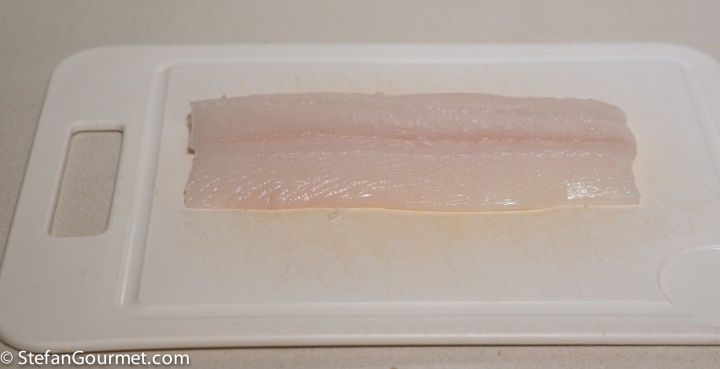

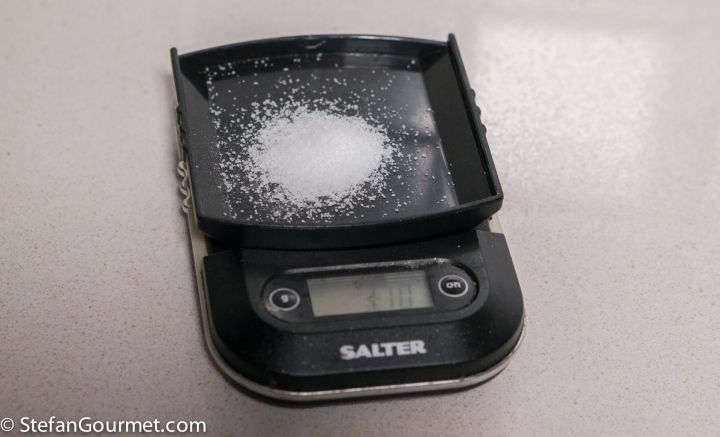
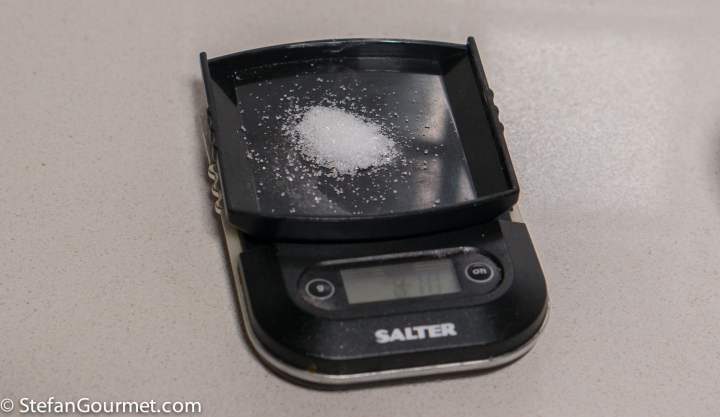
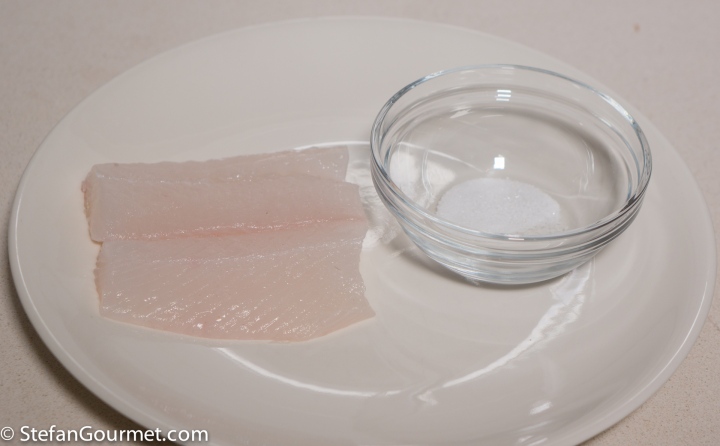
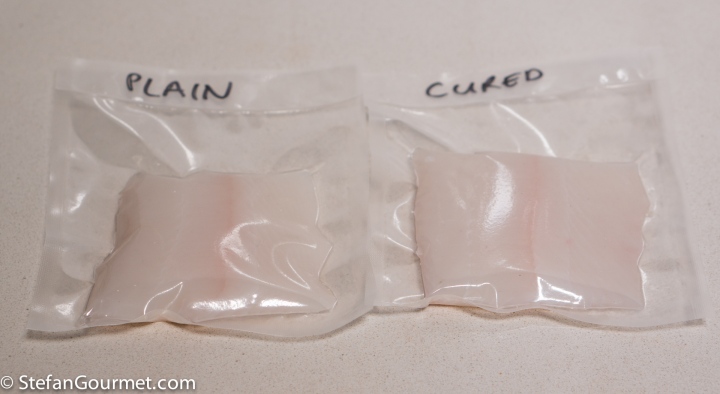

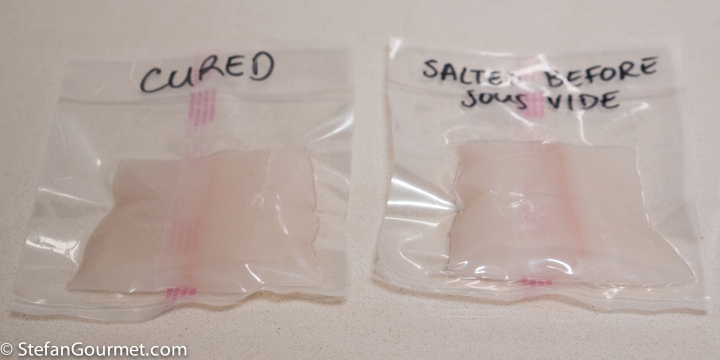
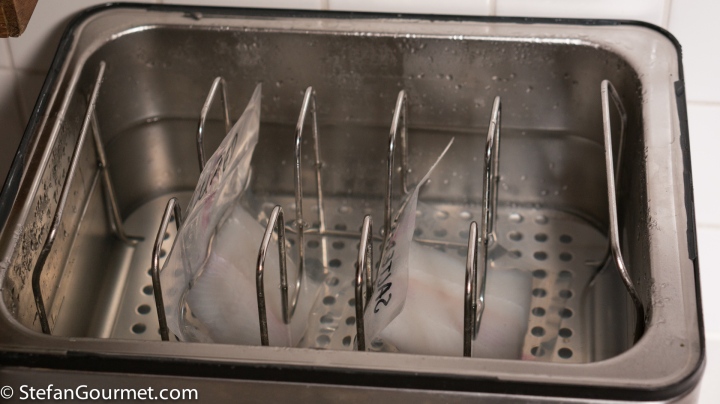
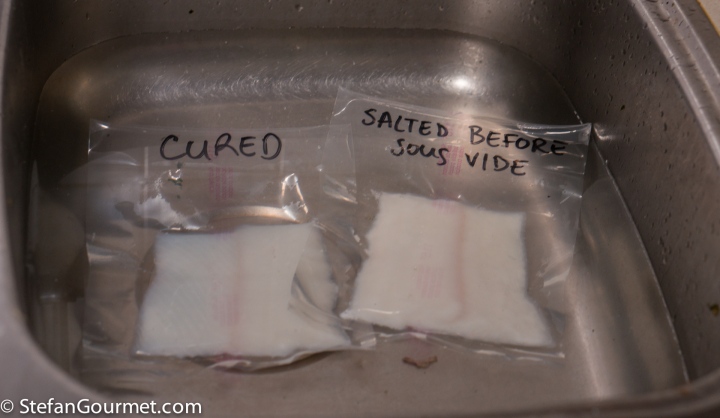
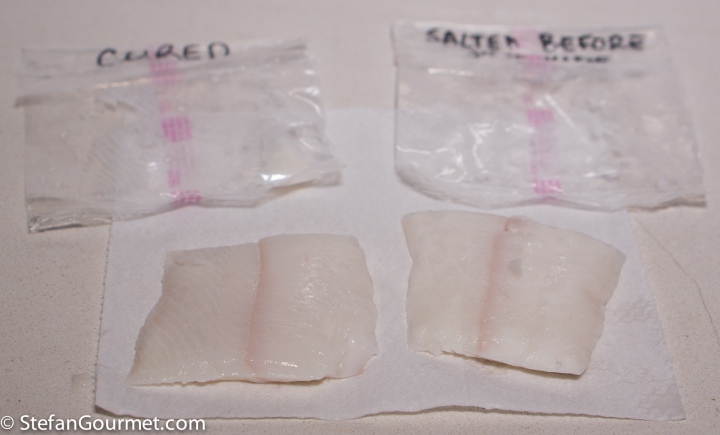
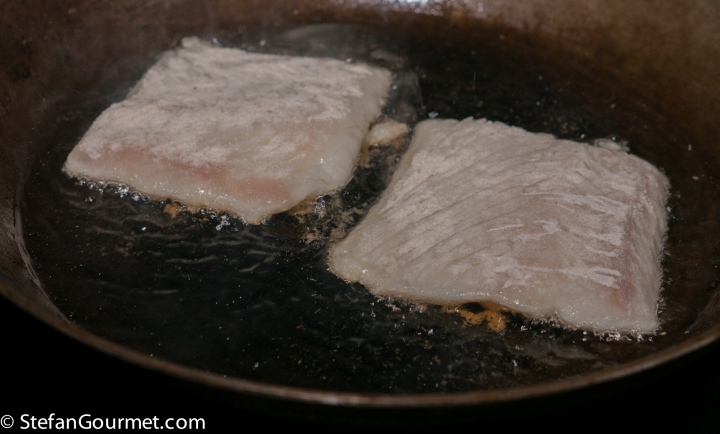
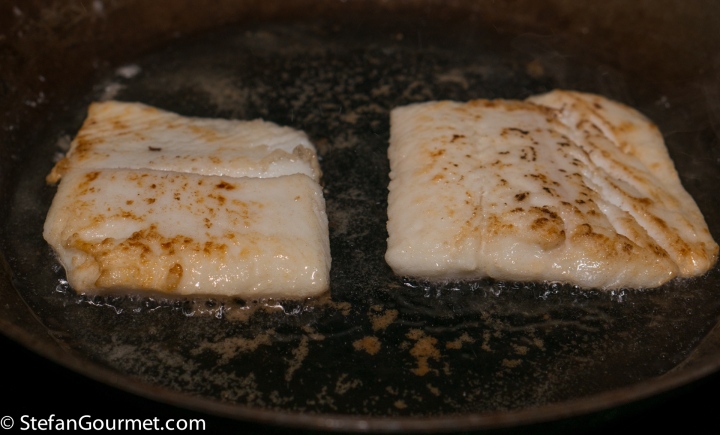
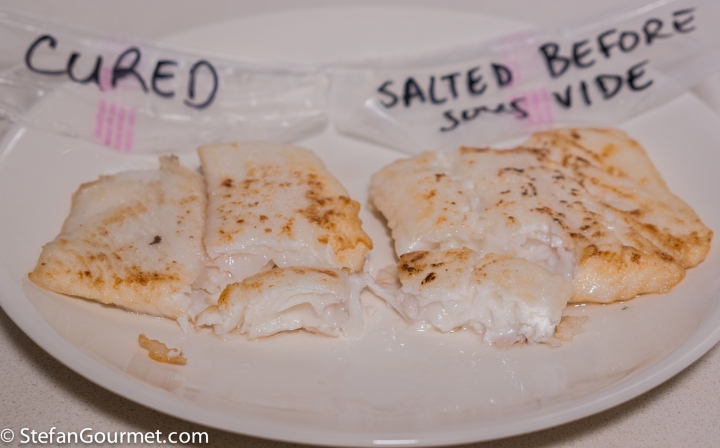

Thanks for sharing this experiment (as you know I just ate raw but cured skrei). But why the sugar?
LikeLike
To get the texture you want to get a 2% curing effect. But 2% salt would make it too salty. The sugar also provides a curing effect (not in exactly the same way but similar to salt) and it masks the salty flavor. So it actually tastes less salty than using only 1.4% salt. Most curing mixes have sugar in them as well for this reason.
LikeLike
Thanks for the experiment. I’m hoping you will find that cooking the cured piece in the same bag works. Anything to save the extra couple of steps.
LikeLiked by 1 person
good post: comparisons are always useful. I pre salt both fish and meat because I think the flavour is much better: I pre salt fish few hrs in advance of cooking and meat… even few days.
LikeLiked by 1 person
Thank you so much for those info . Now it is clear that there are significant differences advantages with brining.
LikeLiked by 1 person
The word brining is used more frequently for wet cures, where the salt is dissolved in water and the fish submerged in the water. I prefer a dry cute as it is described here, because with a brine you add water into the fish and thus dilute its flavor.
LikeLike
Loved reading about your experiment and do admire your accuracy and patience. Altho’ I both brine and dry rub at times I guess my fresh fish fillets will continue to be freehand salted, peppered and just carefully ‘loved’ in the pan – ready in a couple of minutes . . . *big smile* . . .
LikeLiked by 1 person
That is an interesting experiment. Personally, I like the texture of slightly cured fish. I will often dry cure a pacific salmon side before we barbecue it. I find that curing really enhances the flavour. Did you do any curing of the sea bass you served us on Thursday?
I brined our 5 kg turkey this past Christmas and found it to be significantly more flavourful and remarkably less dry than baking it without brining. What I found enormously surprising is that it finished baking in half the normal baking time!
LikeLike